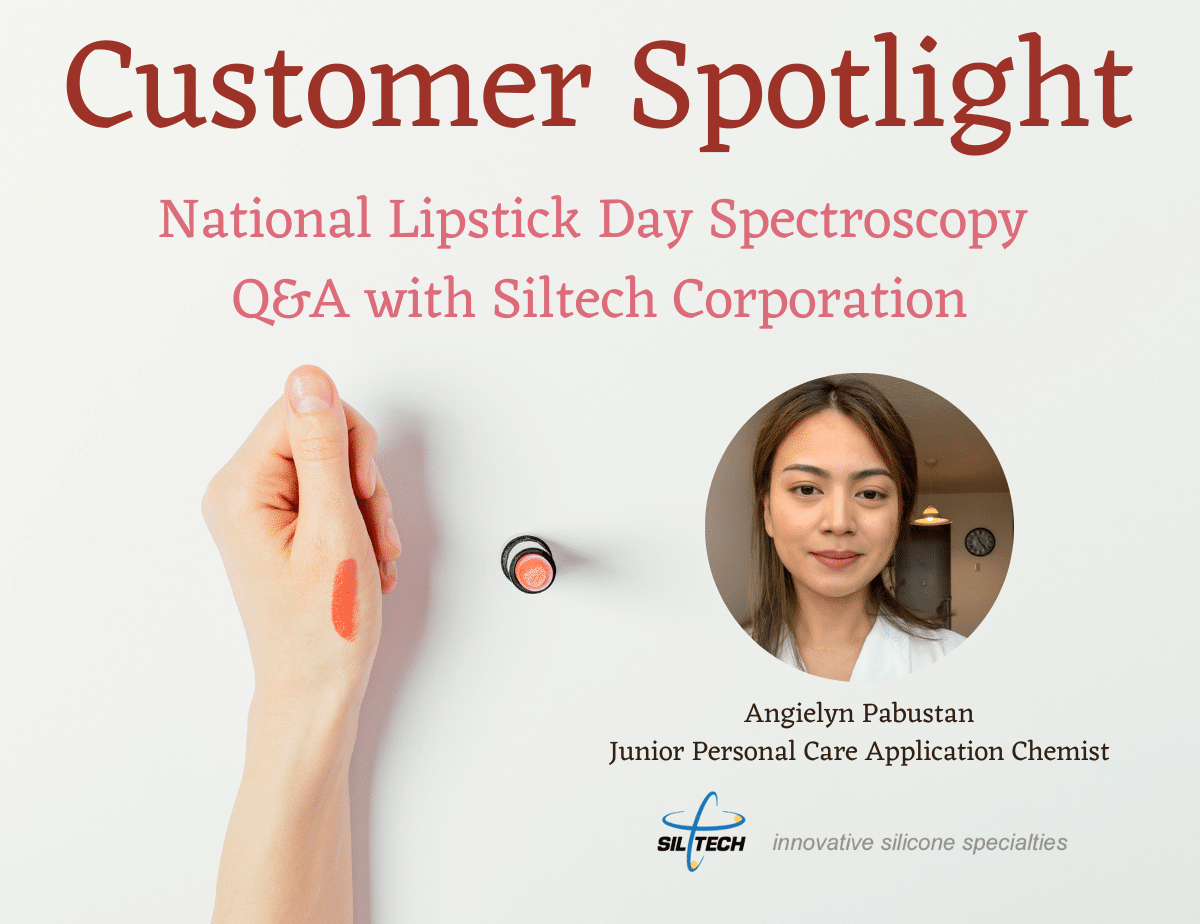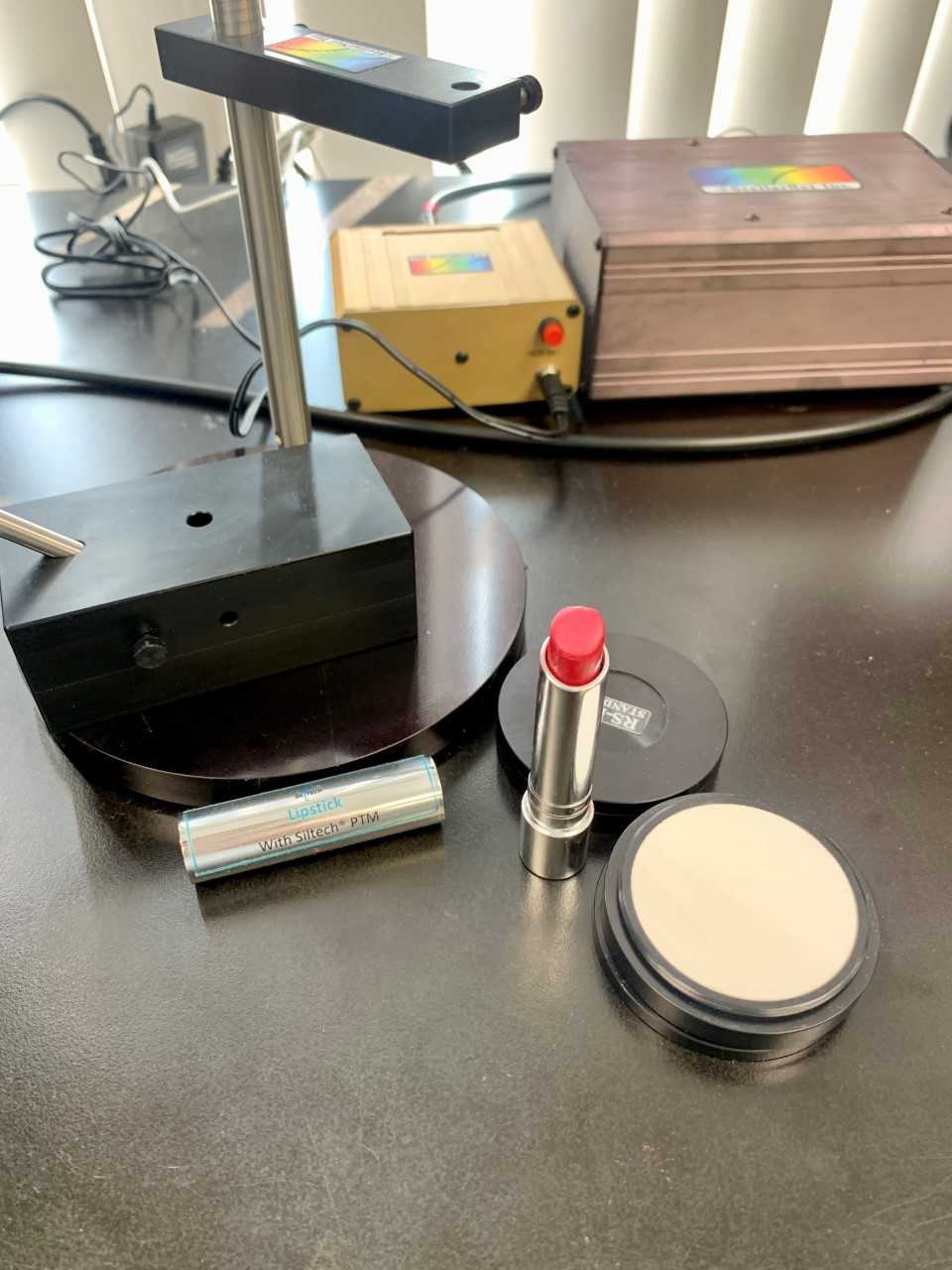
Observed on July 29th each year, National Lipstick Day provides an opportunity for beauty enthusiasts worldwide to indulge in the art of lipstick and explore its vibrant shades, textures, and finishes. While lipstick is renowned for its ability to enhance one’s appearance, its chemistry and pigmentation can also be appreciated through the lens of spectroscopy.
We had the pleasure of interviewing a StellarNet client, Siltech Corporation, who is using our BLACK-Comet spectrometer to analyze the glossiness of added silicone in lipsticks. Check it out!

Angielyn Pabustan is a Junior Personal Care Application Chemist at Siltech Corporation.

Jordan Finchum is in charge of Scientific Marketing at StellarNet, Inc.
Jordan: Tell us a little bit about Siltech.
Angielyn: Siltech is a manufacturer of specialty silicone for different industries such as cosmetics and personal care, paper coating, automotive, and we tailor our silicone for our functional groups to meet the function of whatever industry it’s being applied to.
Jordan: How long have you been with Siltech?
Angielyn: Personally, I have been here for one year. So, I’m one of the newbies!
Jordan: Do you work solely in the cosmetics section?
Angielyn: Yea! Different industries have different departments and I am part of the applications for personal care, specifically.
Jordan: I wanted to talk about the lipstick project you’ll be working on. What’s your plan and/or goal using the StellarNet spectrometer?
Angielyn: One particular silicone called phenyl trimethicone is already an ingredient in the market used for gloss as well as lipstick, and even foundation and concealers. Our company, Siltech, has developed a version of phenyl trimethicone called Siltech® PTM. So, my purpose for this project is to develop a lipstick containing our ingredient to compare it to a lipstick without any gloss additive to see how much gloss, or reflectance, our Siltech® PTM is providing!
Jordan: So, you are looking to see if Siltech® PTM can make lipsticks more glossy?
Angielyn: Yes, glossy! Phenyl trimethicone has a relatively high refractive index, so what we are expecting to see is that our Siltech® PTM is making the lipstick shinier when applied.
Jordan: What are the benefits of using silicone in cosmetics?
Angielyn: Silicone is often an additive in cosmetics, so they improve the feel, texture, glide, and appearance of cosmetic products. In this case, phenyl trimethicone improves appearance.
Jordan: How do you plan to measure and collect the data with the spectrometer?
Angielyn: By using a spectrometer, I am hoping to try to quantify the amount of shine or light reflectance off of a lipstick. So, we have a control where there’s no gloss additive and we’ll measure the amount of light that is reflected off of that, versus a lipstick that has that gloss additive and compare the two samples to see if there’s more light shining off of lipstick containing the silicone gloss.
Jordan: Has Siltech used a StellarNet spectrometer before?
Angielyn: Yes! Recently, my colleague used a spectrometer to measure the lightness of a sunscreen. She’s trying to find a correlation and understand if the ingredient we add to reduce the lightness is making the difference or if it’s based on the skin tone the sunscreen is being applied to.
Jordan: That’s fun! Have you personally used the spectrometer yourself?
Angielyn: I have! What I personally find really useful about it is color matching and assigning a numerical value to a color, which I think is very beneficial for lipsticks because obviously, lipsticks are very colorful.
By utilizing spectroscopic techniques such as absorption spectroscopy, researchers can analyze the specific wavelengths of light that are absorbed or reflected by different lipstick pigments. This analysis allows for a deeper understanding of the chemical composition and optical properties that give each lipstick its unique hue!






